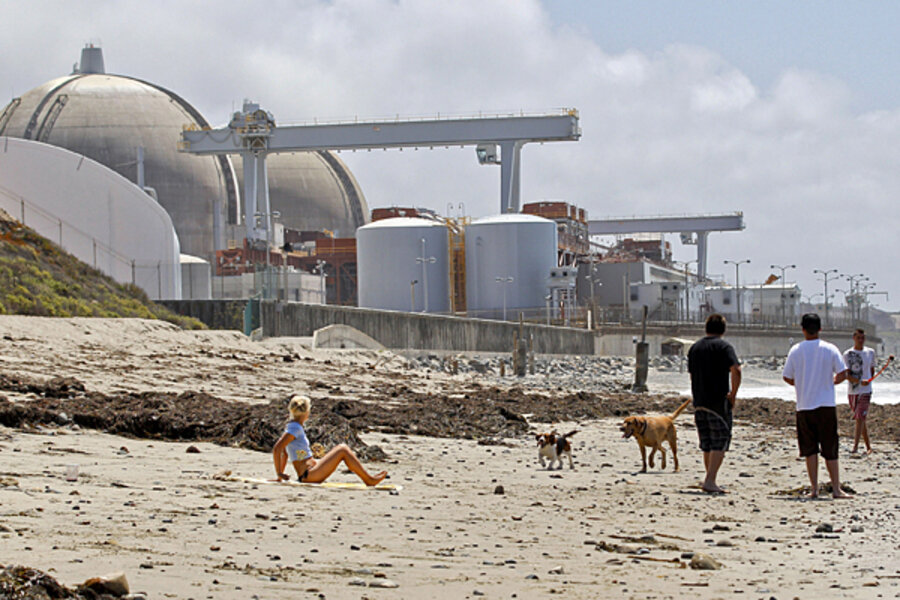Natural gas glut crimps nuclear power
Loading...
A nuclear plant in Wisconsin closed Tuesday, after nearly four decades of power generation. Earlier this year, owners of a plant in Florida opted for retirement over rehabilitation. The fate of the San Onofre nuclear plant in California hangs in the balance.
Differing factors play a role these plants' demise – age, regulations, leaks, and regional market conditions, to name a few. But one unifying pressure on these nuclear plants and others is the abundance of cheap, American natural gas.
Low-cost, low-emission natural gas has already been blamed for shuttering coal plants and weighing on wind and solar financing. Now, it seems, nuclear is also falling victim to the natural gas glut.
It partly explains Tuesday's closing of the Wisconsin-based 556-megawatt Kewaunee Power Station.
"This closing does not herald the end of our company's commitment to nuclear power," said David Heacock, president of Kewaunee's owner, Dominion Nuclear, in a statement. "It is a safe, reliable and carbon-free technology, but as with all forms of generation, it must compete on economics, including the necessity of being price competitive on a regional level."
That competition is exacerbated by Kewaunee's status as a “merchant” plant.
Unlike regulated nuclear plants that recover operating costs from ratepayers, Kewaunee sells its power output at market prices. In the Midwest electricity market, the region's subsidized wind industry bids its output into the market at low or negative prices (and makes up for it with tax credits), said Edward Kee, vice president of NERA Economic Consulting. That makes it difficult for small plants like Kewaunee to compete.
The shale gas boom may have been the final straw for the Wisconsin plant.
Over the past decade, new drilling techniques have unlocked massive amounts of gas trapped in rock formations called shale. Prices plummeted, pushing energy companies toward natural gas and away from other sources of fuel. Those prices appear to have bottomed out in 2012 at around $2.60 per million Btu and are projected to rise as production costs increase.
Still, many predict natural gas will continue to dominate the US energy portfolio.
"We’re coming into a new time now when the shale gas phenomenon is real, and the expectations are that it's going to last for a very long time," Mr. Kee said in a telephone interview. "Most people don’t expect natural gas prices to go back above $10 for a long time."
The heavy reliance on natural gas concerns some in the industry. Some question whether the nation's aging system of pipelines and other infrastructure are equipped to handle to the country's booming shale gas production. And when natural gas prices jump unexpectedly – during a long cold snap for example –electricity prices skyrocket and create an added burden for consumers.
"There’s clearly a role for natural gas in the electric supply system, but we get these periodic reminders that it’s not good to have all your eggs in one basket," said Richard Myers, vice president of policy development, planning, and supplier programs at the Washington-based Nuclear Energy Institute, a policy organization of the nuclear energy and technologies industry.
The need for a diverse energy portfolio, Mr. Myers said in a telephone interview, is why the long-term outlook for nuclear remains strong, despite the natural gas boom.
"When you add in somewhat higher gas prices, the retirement of coal capacity, increasing electricity demand as the economy recovers, then I think you can make a pretty strong business case for the nuclear plants already operating, and in some cases, building new ones."






